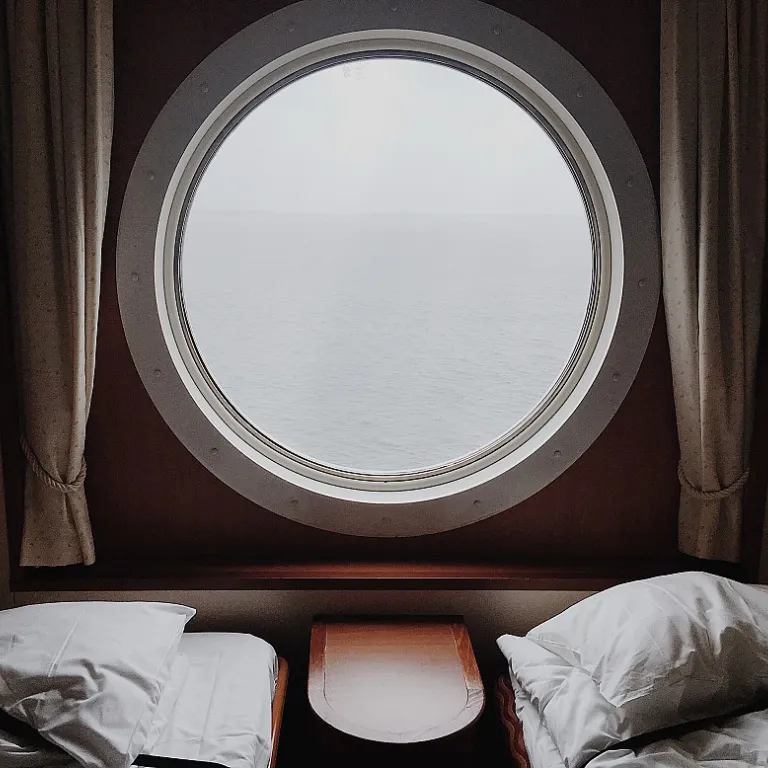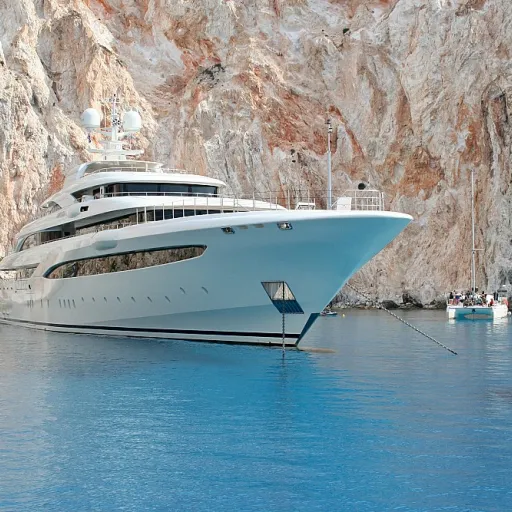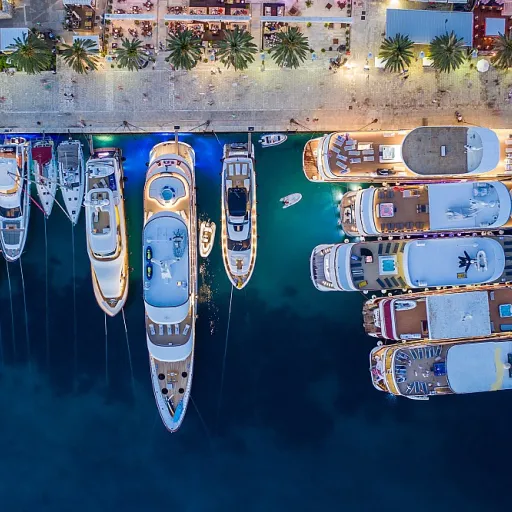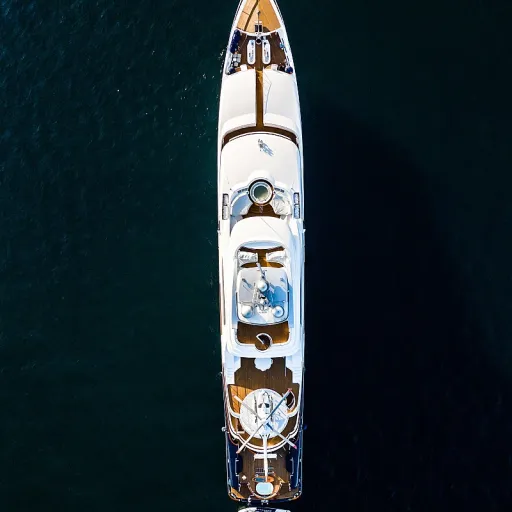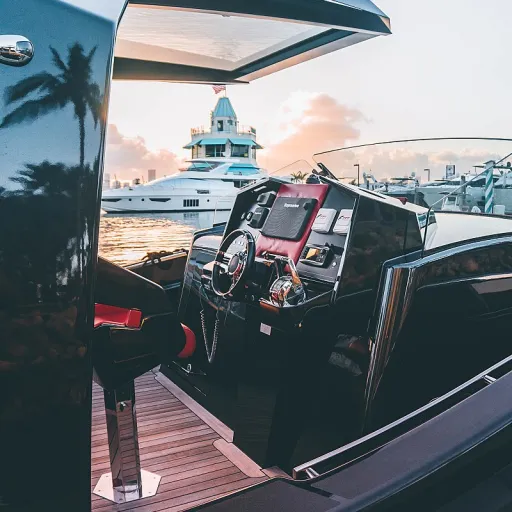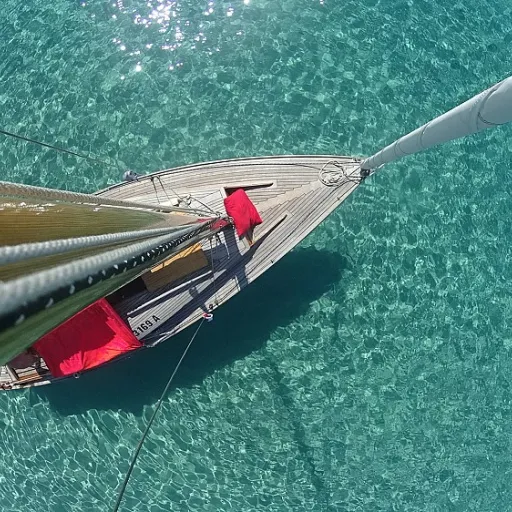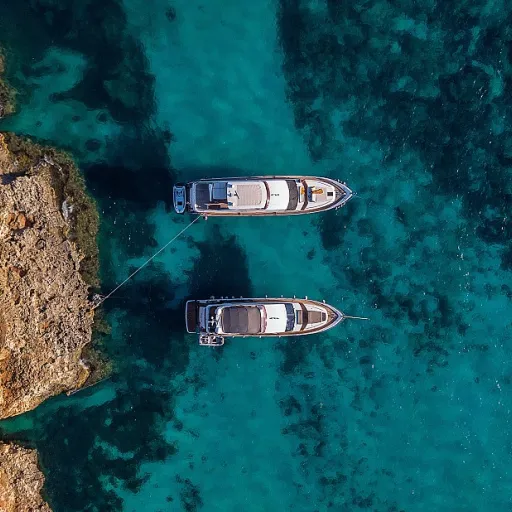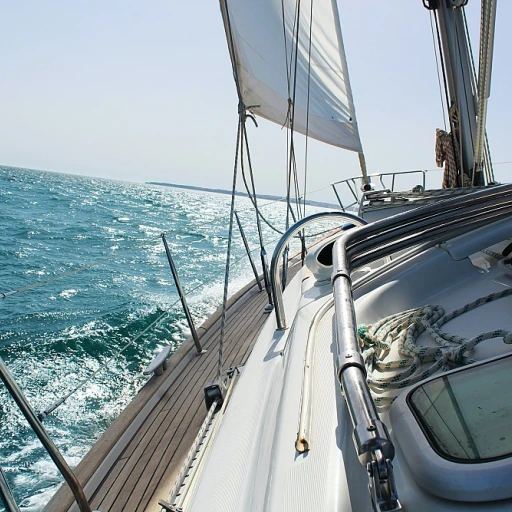
Understanding the importance of a pfd for sailing
Why a PFD is Non-Negotiable for Yacht Sailing
When you step onto a yacht, the water becomes both your playground and your greatest risk. No matter your experience level, a personal flotation device (PFD) is your first line of defense against the unpredictable. The right PFD can mean the difference between life and tragedy, especially when conditions change quickly or you find yourself unexpectedly overboard.
Unlike basic flotation devices, modern PFDs for sailing—such as inflatable PFDs and advanced buoyancy aids—are designed with specific mechanisms and features that address the unique challenges faced on yachts. The bladder design, trigger mechanism, and firing mechanism all play a role in how the device performs when you need it most. Brands like Spinlock have set industry standards with their Deckvest and Deckvest Lite, offering high visibility, reliable inflation, and ergonomic design for long hours on deck.
Statistics from coast guard authorities consistently highlight that wearing an approved PFD or life jacket dramatically increases survival rates in man-overboard situations. USCG approved and guard approved flotation devices are tested for buoyancy, durability, and visibility, ensuring they meet strict safety standards. Features like crotch straps, strobe lights, and reflective panels further enhance your chances of being seen and staying afloat until help arrives.
It’s not just about survival—comfort and usability are also critical. The best PFDs balance safety with wearability, so you’re more likely to keep them on throughout your time on the water. This is especially important when sailing in challenging conditions or at night, where a high-visibility jacket with a secure strap and light can be a literal lifesaver.
For a deeper dive into essential safety gear, including how anchor lights contribute to onboard safety, check out this guide on navigating the essentials of boat anchor lights.
Types of pfds suitable for yacht sailing
Exploring the Main Types of Personal Flotation Devices for Yacht Sailing
When it comes to pfd sailing, not all flotation devices are created equal. Yacht enthusiasts must consider the unique demands of open water, variable weather, and the need for mobility on deck. Here’s a breakdown of the most relevant types of pfds and how they fit into the world of yachting:
- Inflatable PFDs: These are a popular choice among sailors for their slim design and comfort. Inflatable pfds, such as the Spinlock Deckvest and Deckvest Lite, use a bladder that fills with air when triggered by a firing mechanism—either manually or automatically upon water immersion. Their compactness makes them ideal for long hours on deck, but regular checks of the trigger mechanism and bladder design are essential for safety.
- Foam Buoyancy Aids: These jackets provide flotation through built-in foam. While bulkier than inflatable options, they require less maintenance and are always ready to use. Buoyancy aids are often favored for inshore sailing or situations where quick rescue is likely, but may not offer the same level of life-saving support in offshore conditions.
- Hybrid Life Jackets: Combining foam and inflatable elements, hybrid pfds offer a balance between immediate flotation and comfort. They are less common in yachting but can be suitable for those seeking extra security without sacrificing wearability.
Key Considerations for Yacht Enthusiasts
When selecting a pfd for sailing, it’s crucial to look for features that match your specific needs. Some pfds come equipped with crotch straps, strobe lights, and high visibility panels, all designed to enhance survival in the water. The Spinlock Deckvest range, for example, is renowned for its ergonomic design and integrated safety features, making it a top choice for many offshore sailors.
It’s also important to ensure your chosen flotation device is coast guard approved or uscg approved, as this guarantees compliance with safety regulations. Approved pfd models are rigorously tested for buoyancy, durability, and performance in real-life scenarios.
For those interested in the technical side of yachting gear, understanding how different pfd designs integrate with other safety equipment—like harnesses and tethers—can be valuable. If you’re curious about advanced materials and construction techniques used in modern yachting, check out this comparison of Dyneema splicing methods for further insight into innovation on board.
Ultimately, the right life jacket or buoyancy aid for your yacht will depend on your sailing style, the conditions you face, and your personal preferences for comfort and usability. Remember, a well-chosen pfd is not just a piece of equipment—it’s a vital part of your survival strategy on the water.
Key features to look for in a sailing pfd
Essential Elements for Effective Sailing PFDs
When selecting a personal flotation device (PFD) for sailing, it’s not just about meeting regulations. Yacht enthusiasts know that the right features can make the difference between a jacket you want to wear and one that ends up stowed away. Let’s break down what to look for in a quality sailing PFD.
- Inflatable vs. Foam Buoyancy Aids: Inflatable PFDs, like the Spinlock Deckvest, are popular for their slim design and comfort. They use a bladder that inflates automatically or manually via a trigger mechanism. Foam buoyancy aids, on the other hand, provide constant flotation but are bulkier. For long passages or racing, many sailors prefer inflatable jackets for their freedom of movement.
- Bladder Design and Inflation Mechanism: The bladder’s shape and placement affect how the PFD supports you in the water. Look for a design that turns you face-up when inflated. The firing mechanism—manual, automatic, or hydrostatic—should be reliable and easy to check. Some models, like the Deckvest Lite, offer a clear window to inspect the trigger mechanism.
- Crotch Straps and Secure Fit: A PFD is only as good as its fit. Crotch straps prevent the jacket from riding up during a fall into the water, keeping the bladder in the right position for survival. Adjustable straps and a snug fit are crucial, especially in rough conditions.
- High Visibility and Safety Add-ons: Visibility is vital in emergencies. Choose a PFD with bright colors, reflective tape, and a strobe light attachment point. Some jackets come with built-in lights or whistles for added safety.
- USCG and Coast Guard Approved: Always check for approval from the US Coast Guard or relevant authority. An approved PFD meets strict standards for buoyancy and performance, ensuring it’s up to the task on the water.
- Comfort and Wearability: The best life jackets balance safety with comfort. Lightweight materials, ergonomic design, and breathable fabrics encourage regular use. The Spinlock Deckvest series is a favorite among yacht crews for this reason.
For those who want to optimize every aspect of their sailing gear, even small details like rope splicing can matter. Curious about how Dyneema bury techniques can affect your yacht’s rigging? Check out this guide on how Dyneema bury can shorten your rope for more insights.
Ultimately, the right PFD for sailing is one that you’ll wear every time you’re on deck. Prioritize features that fit your sailing style, vessel type, and the conditions you expect to face.
Regulations and standards for pfds in yachting
Meeting International and Local Safety Standards
When selecting a PFD for sailing, understanding the regulations and standards is crucial. Not all flotation devices are created equal, and compliance can mean the difference between safety and risk on the water. Authorities like the Coast Guard set clear requirements for life jackets and buoyancy aids used on yachts. In the United States, for example, only USCG approved PFDs are recognized as legal for use on most recreational vessels. This approval ensures that the jacket or inflatable PFD meets rigorous testing for buoyancy, durability, and performance in real-life conditions.
What Makes a PFD "Approved"?
An approved PFD must pass tests for flotation, visibility, and reliability. The design and mechanism—whether it’s a traditional foam jacket or an inflatable bladder—are scrutinized for their ability to keep a person afloat and visible. High visibility colors and reflective tape are often required, along with a whistle or strobe light for signaling. For inflatable PFDs, the firing mechanism or trigger mechanism must reliably inflate the bladder when needed, either automatically or manually. Spinlock Deckvest and Deckvest Lite are examples of products that meet these standards, offering both comfort and compliance.
Key Regulatory Points for Yacht Enthusiasts
- Type and Fit: Regulations often specify the type of PFD (life jacket, buoyancy aid, etc.) and require a proper fit, including secure crotch straps to prevent the jacket from riding up in the water.
- Maintenance: Approved PFDs must be in good condition, with all straps, buckles, and the bladder design intact. Inflatable models should have their firing mechanism checked regularly.
- Quantity: There must be an approved PFD for each person on board, and some regions require additional flotation devices for children or non-swimmers.
- Special Features: Some standards require additional features like a strobe light or high-visibility panel, especially for offshore sailing.
Staying informed about the latest standards and ensuring your chosen PFD—whether it’s a Spinlock Deckvest, an inflatable jacket, or a traditional life jacket—meets all regulatory requirements is essential for safe and legal yachting. Always check for the appropriate approval label before heading out on the water.
Comfort and usability: balancing safety with wearability
Finding the Balance: Safety and Everyday Wear
For yacht enthusiasts, a personal flotation device (PFD) is not just about meeting regulations—it's about real-world survival and comfort on the water. The best PFDs for sailing blend advanced safety features with thoughtful design, making them wearable for long hours on deck without sacrificing protection.
- Fit and Adjustability: A snug, secure fit is essential. Look for adjustable straps, especially crotch straps, to keep the jacket in place if you fall overboard. Poorly fitted PFDs can ride up or slip off, reducing their effectiveness.
- Weight and Bulk: Modern inflatable PFDs, like the Spinlock Deckvest and Deckvest Lite, use compact bladder designs. These are less bulky than traditional life jackets, making movement around the yacht easier, especially during maneuvers.
- Breathability and Materials: High-quality materials help reduce chafing and overheating. Mesh panels and soft linings improve airflow, which is crucial during long days under the sun.
- Ease of Use: Quick-release buckles, intuitive firing mechanisms, and clearly marked inflation triggers are important. In an emergency, you want a PFD that’s simple to operate, even with cold or wet hands.
- Visibility and Accessories: High visibility colors, reflective strips, and integrated strobe lights or attachment points for personal lights increase your chances of being spotted in the water. Many approved PFDs include these features as standard.
Comfort also means considering how the PFD interacts with your sailing gear. Some jackets are designed to work seamlessly with harnesses and safety lines, while others may restrict movement. Buoyancy aids and life jackets with ergonomic shapes allow for better mobility, which is critical during active sailing.
Finally, remember that comfort and usability are only effective if your PFD is properly maintained and regularly checked. Even the best design can fail if the bladder, trigger mechanism, or firing mechanism is compromised. Always choose a USCG approved or Coast Guard approved flotation device for peace of mind on the water.
Maintenance and care tips for your sailing pfd
Keeping Your PFD Ready for Action
Regular care is essential to ensure your personal flotation device (PFD) performs when it matters most. Whether you rely on a classic life jacket, an inflatable PFD, or a high-tech Spinlock Deckvest, proper maintenance extends the life and reliability of your gear.- Rinse after every use: Salt water, sand, and sun can degrade materials. Rinse your PFD with fresh water after sailing, especially if it’s been exposed to salt or dirt. Let it air dry away from direct sunlight to prevent UV damage.
- Inspect the bladder and straps: For inflatable models, check the bladder design for punctures or wear. Examine all straps, including the crotch strap, for fraying or loose stitching. Pay attention to the buoyancy aids and ensure the crotch straps are secure and undamaged.
- Check the firing mechanism: Inflatable PFDs rely on a trigger mechanism to inflate. Regularly inspect the firing mechanism and CO2 cylinder. Replace the cylinder if it’s corroded or used. Most manufacturers, including Spinlock, recommend annual servicing for their Deckvest and Deckvest Lite models.
- Test inflation: At least once a year, manually inflate your PFD to check for leaks. Leave it inflated overnight to confirm it holds air. This is crucial for survival if you ever need it in an emergency.
- Maintain high visibility and safety features: Ensure reflective strips, strobe light, and whistle are intact and functional. Replace any worn or missing parts to keep your life jacket or buoyancy aids compliant with coast guard approved standards.
- Store properly: Avoid compressing or folding your PFD for long periods. Store it in a cool, dry place, away from chemicals and direct sunlight. This preserves the integrity of the flotation devices and the trigger mechanism.
What to Avoid
- Never use harsh detergents or bleach on your PFD. These can weaken the fabric and bladder.
- Don’t modify your jacket or add non-approved accessories. This can affect buoyancy and void coast guard or USCG approved status.
- Avoid storing your PFD in a damp environment, which can lead to mold and mildew, compromising the design and effectiveness.

